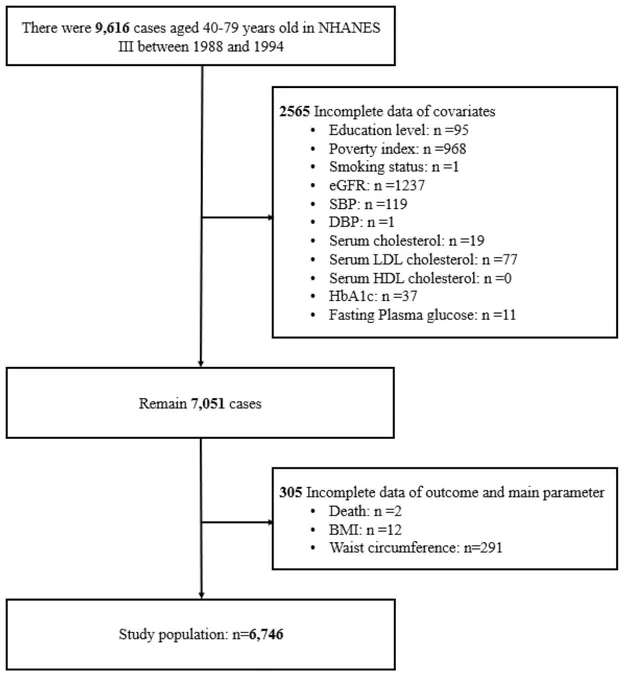
Unlocking the Secrets to Heart Health: The Game-Changing Role of Waist-to-BMI Ratio in Predicting Cardiovascular Risks
2025-05-17
Author: Rajesh
The Global CVD Crisis: A Wake-Up Call
Cardiovascular disease (CVD) stands as the world's leading killer, claiming nearly 18 million lives annually. Once dominated by older adults, alarming trends show rising risk factors like obesity and unhealthy lifestyles among younger adults aged 18 to 50 in developed nations.
Understanding the Risks: More Than Just Weight
While obesity accounts for about 20% of CVD cases, numerous other factors—unhealthy diets, diabetes, high blood pressure, and even genetics—further complicate the landscape of heart health. Identifying individuals at heightened risk is crucial for effective intervention.
BMI: A Common but Flawed Measure
Body Mass Index (BMI) has long been the go-to metric for assessing obesity and associated cardiovascular risk. However, it fails to differentiate between muscle and fat, raising questions about its effectiveness. Alternatives like the waist-to-BMI ratio and body shape index have been proposed, potentially offering better insights into true health risks.
The Study: A Dive into NHANES Data
In a bold move to refine risk assessments, this study taps into the Third National Health and Nutrition Examination Survey (NHANES III) data, spanning a diverse cohort of U.S. adults. It aims to compare various anthropometric measures, focusing particularly on the waist-to-BMI ratio and the allometric body shape index (ABSI).
Examining The Data: Who's at Risk?
In exploring data from nearly 10,000 participants aged 40-79, researchers worked to uncover the relationship between body measurements and cardiovascular mortality. Ultimately, 6,746 individuals remained for analysis after filtering out those with incomplete data.
Predictive Power: Which Measure Reigns Supreme?
The analysis revealed that ABSI and the waist-to-BMI ratio exhibit notable predictive capabilities for CVD mortality. While traditional FRS (Framingham Risk Score) performed well, these newer metrics proved valuable, especially in clinics with limited access to laboratory tests.
A Practical Guide to Future Health Assessments
With central adiposity now recognized as a key contributor to cardiovascular risk, integrating waist-to-BMI ratio into regular health evaluations could transform preventive strategies. This measure is straightforward to calculate, making it ideal for use in various healthcare settings, particularly those catering to underserved populations.
Challenges and Considerations
Despite the promising findings, limitations such as the exclusion of individuals with incomplete data and the reliance on self-reported measures pose ongoing challenges. The study also draws from data collected between 1988 and 1994, potentially limiting its relevance to current populations.
Looking Ahead: The Path to Better Heart Health
As we confront the growing heart disease epidemic, the study emphasizes the necessity of refining risk assessment tools. With further validation, the waist-to-BMI ratio could prove vital in early detection and intervention strategies, empowering healthcare providers to better serve at-risk populations. Ultimately, the goal is clear—prevention is more straightforward and effective than treatment.
Final Thoughts: The Future of Cardiovascular Health
As we evolve our understanding of cardiovascular risk, the waist-to-BMI ratio stands out as a beacon of hope. Its ease of use and predictive power may pave the way for a healthier future, one where timely interventions save lives.




 Brasil (PT)
Brasil (PT)
 Canada (EN)
Canada (EN)
 Chile (ES)
Chile (ES)
 Česko (CS)
Česko (CS)
 대한민국 (KO)
대한민국 (KO)
 España (ES)
España (ES)
 France (FR)
France (FR)
 Hong Kong (EN)
Hong Kong (EN)
 Italia (IT)
Italia (IT)
 日本 (JA)
日本 (JA)
 Magyarország (HU)
Magyarország (HU)
 Norge (NO)
Norge (NO)
 Polska (PL)
Polska (PL)
 Schweiz (DE)
Schweiz (DE)
 Singapore (EN)
Singapore (EN)
 Sverige (SV)
Sverige (SV)
 Suomi (FI)
Suomi (FI)
 Türkiye (TR)
Türkiye (TR)
 الإمارات العربية المتحدة (AR)
الإمارات العربية المتحدة (AR)